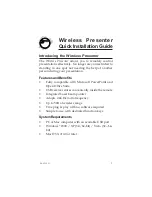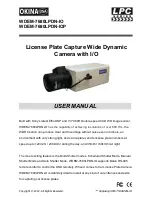
Glossary
Verint Video Intelligence Solutions
56
MPEG-4 A graphics and video lossy compression algorithm standard that is derived from
MPEG-1, MPEG-2, and H.263. MPEG-4 extends these earlier algorithms with synthesis of
speech and video, fractal compression, computer visualization, and artificial
intelligence-based image processing techniques.
Multicast Communication between a sender and multiple receivers on a network; the
devices can be located across multiple subnets, but not through the Internet. Multicast is a
set of protocols using UDP/IP for transport.
NTSC (National Television Standards Committee) The North American standard (525-line
interlaced raster-scanned video) for the generation, transmission, and reception of television
signals. In addition to North America, the NTSC standard is used in Central America, a
number of South American countries, and some Asian countries, including Japan. Compare
with PAL.
NTP (Network Time Protocol) A protocol designed to synchronize the clocks of devices
over a network.
OSD (On-screen Display) Status information displayed on the video monitor connected to
a receiver edge device.
PAL (Phase Alternation by Line) A television signal standard (625 lines) used in the United
Kingdom, much of western Europe, several South American countries, some Middle East and
Asian countries, several African countries, Australia, New Zealand, and other Pacific island
countries. Compare with NTSC.
PEAP (Protected Extensible Authentication Protocol) A method to securely transmit
authentication information, including passwords, over a wireless network.
Point-to-Point Connection The association of a transmitter and a receiver to view video
coming from an analog camera on an analog monitor.
PSK (Pre-Shared Key) A mode of the WPA and WPA2 security protocols, designed for
home and small office networks that cannot afford the cost and complexity of an
authentication server. It is also known as personal mode.
PTL (Push-To-Listen) In a two-way system, the communication mode in which the listener
must push a button while listening.
PTT (push-To-Talk) In a two-way system, the communication mode in which the talker
must push a button while talking.
PTZ Camera (Pan-Tilt-Zoom) An electronic camera that can be rotated left, right, up, or
down as well as zoomed in to get a magnified view of an object or area. A PTZ camera
monitors a larger area than a fixed camera.
QoS (Quality of Service) A set of low-level networking protocols giving higher priority to
more important data flows while ensuring that the less important ones do not fail.
Receiver A device converting a digital video signal into an analog form. Also called
decoder.
Repeater A range extender for wireless links.
RF (Radio Frequency) Any frequency within the electromagnetic spectrum associated with
radio wave propagation. When a modulated signal is supplied to an antenna, an
electromagnetic field is created that is able to propagate through space. Many wireless
technologies are based on RF field propagation.
Nextiva S2800e Series User Guide.book Page 56 Wednesday, March 11, 2009 3:20 PM
Содержание NEXTIVA S2800E series
Страница 1: ...Nextiva S2800e Series User Guide Firmware Release 4 80 April 2009...
Страница 54: ...Verint Video Intelligence Solutions 46 Factory Default Configuration...
Страница 58: ...Verint Video Intelligence Solutions 50 Technical Specifications...
Страница 69: ...Verint Video Intelligence Solutions 61 Compliance...








































